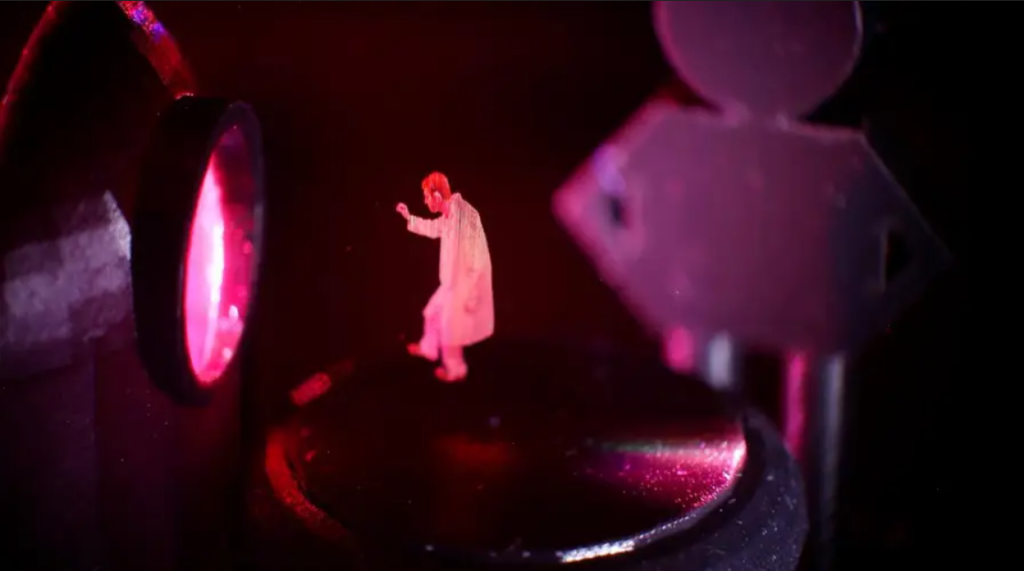Advancements in science are bringing the iconic sci-fi moment of R2-D2 projecting a 3D image of Princess Leia in ‘Star Wars’ closer to reality, and it’s all thanks to minuscule particles resembling dust. In a study published in the journal Nature, researchers detail how they can manipulate nearly imperceptible specks in the air to generate 3D images that surpass the realism and clarity of holograms. Daniel Smalley, the study’s lead author, describes the technology as “printing something in space, just erasing it very quickly.”
In this groundbreaking technique, scientists successfully crafted a small butterfly seemingly dancing above a finger and an image of a graduate student mimicking Leia’s holographic appearance. Despite the prevalence of existing holographic technologies, this innovation closely mirrors the famous Star Wars scene.

The manipulation of these tiny particles is achieved using laser light, akin to the fictional tractor beam in ‘Star Trek,’ explains Smalley, an electrical engineering professor at Brigham Young University. The inspiration for this breakthrough came from a different science fiction film, ‘Iron Man,’ specifically the scene where Tony Stark wears a holographic glove. Smalley notes that such an occurrence would be impossible in reality because Stark’s arm would disrupt the image.

Transitioning from holograms to this type of technology, technically known as volumetric display, is compared to moving from a 2D printer to a 3D printer. While holograms create the illusion of three dimensions, Smalley emphasizes that “all of the magic is happening on a 2D surface.” The key challenge lies in trapping and maneuvering particles around potential disruptions, much like Stark’s arm, so that it no longer obstructs the image.
Initially concerned about gravity causing the particles to fall and rendering image sustainability impossible, Smalley discovered that laser light energy alters air pressure to keep the particles aloft. Unlike other volumetric displays with larger screens that pose safety risks, the device Smalley employs is about one-and-a-half times the size of a children’s lunchbox. Although current projections are modest in size, ongoing research aims to achieve larger projections with multiple beams. This technology holds promise for guiding medical procedures and entertainment, though widespread practical use is still years away.
